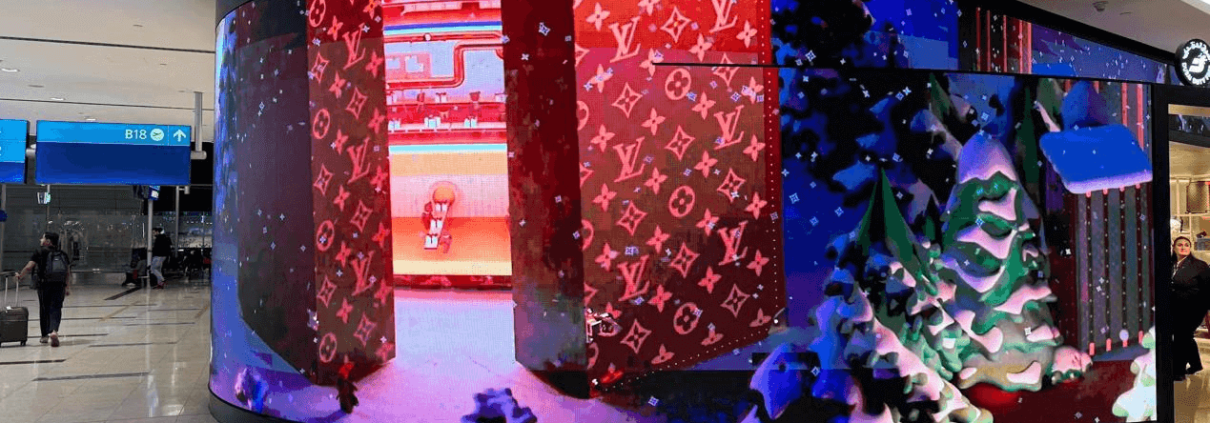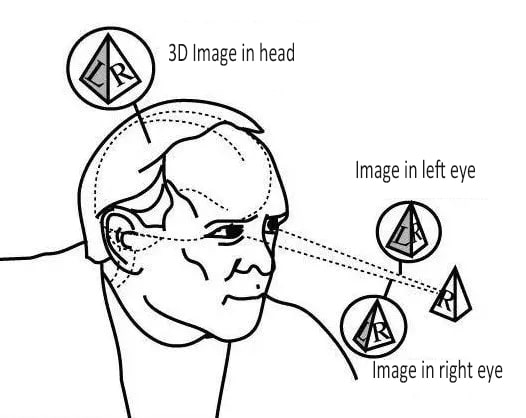The Ultimate Guide to Curved LED Screens
/In the realm of dazzling digital signage and advertising, creative LED displays such as fine-pitch LED screens, transparent LED screens, and curved LED screens have become a popular choice, revolutionizing the way businesses and creators communicate information. Among these innovative LED displays leading the industry trend, curved LED screens are gaining momentum. Curved LED screens offer a unique viewing experience, enhancing everything from gaming and entertainment to advertising and presentations.
Within this comprehensive guide, we will delve into the definition, advantages, and applications of curved LED display screens, providing you with all the information you need to understand and appreciate this cutting-edge display technology.
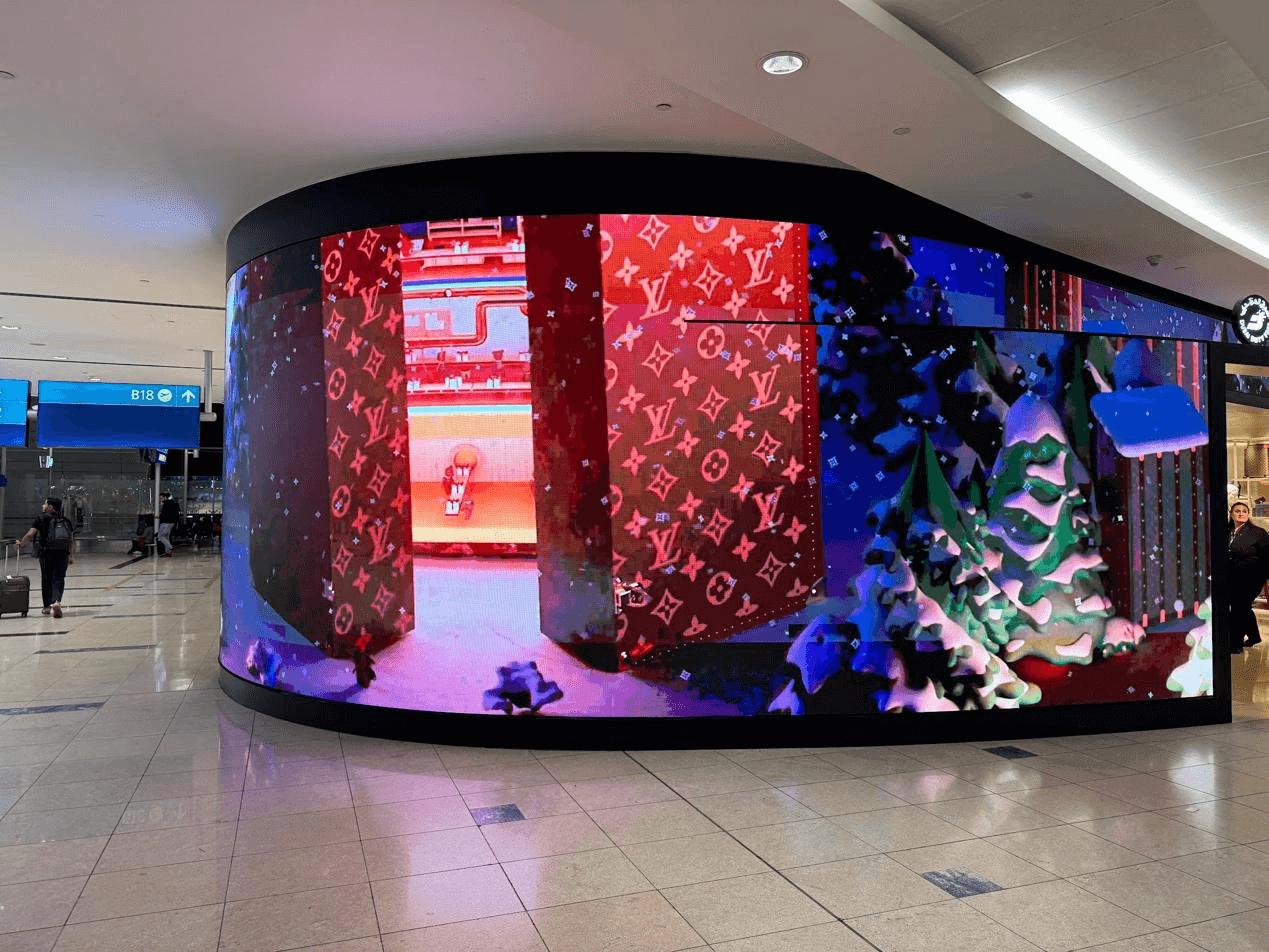
What is a Curved LED Screen?
A curved LED screen, also known as a curved LED video wall or flexible LED screen, is a display technology that features a curved shape instead of a flat surface. Curved LED display screens consist of individual LED modules arranged in a curved or concave/convex structure to create a seamless, non-planar screen surface, such as curved sections at pillars, circular rings, or corners.
The design of curved LED screens aims to mimic the natural curvature of the human eye, offering a more immersive and lifelike viewing experience. By enveloping the screen around the viewer’s field of vision, curved LED screens can create a sense of depth and dimension that traditional flat screens cannot achieve.
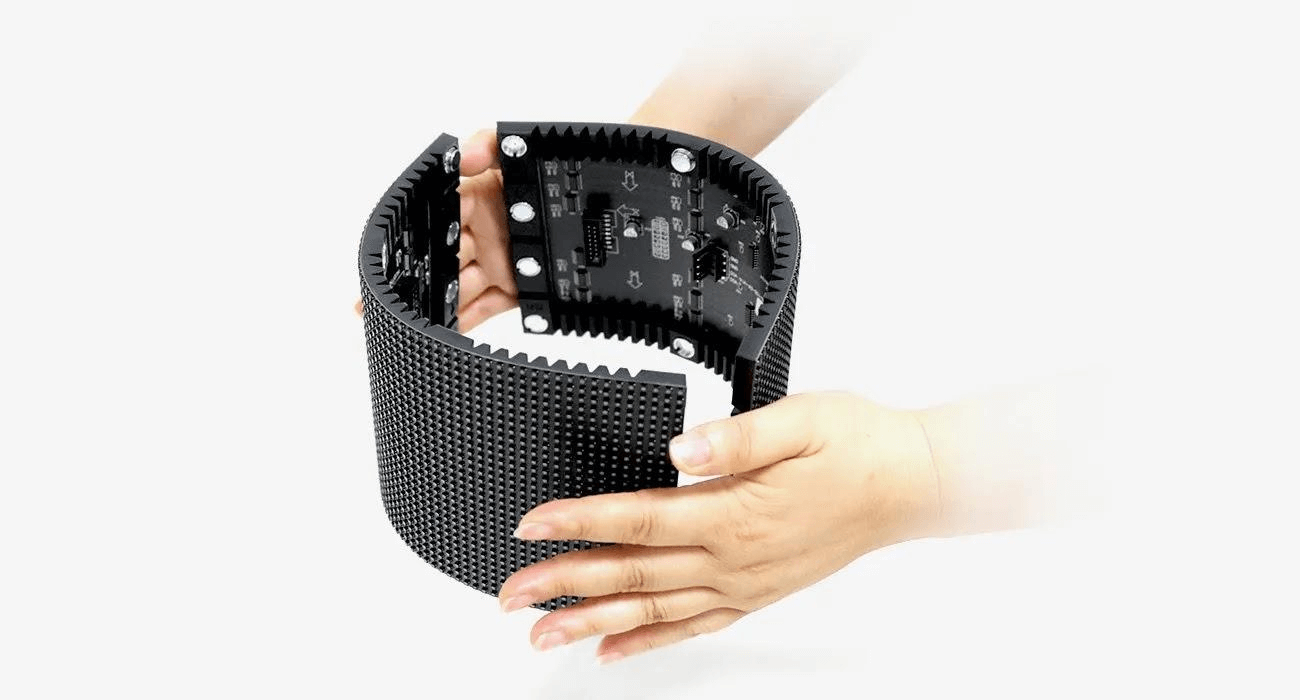
The Advantages of Curved LED Screens
1. Immersive Viewing Experience
Since curved LED display screens have a certain curvature that conforms to the physiology of the human eye, one of their main advantages is the immersive viewing experience they provide. The curved shape of the screen helps wrap images around the viewer, creating a sense of depth and dimension that draws viewers into the content. This is particularly effective for gaming and entertainment applications where a more immersive experience enhances the overall enjoyment of the content.
2. Enhanced Contrast and Color
Curved LED screens aim to provide a more uniform viewing experience by reducing glare and reflections. The curved shape helps reduce edge distortion and color shifts, directing light towards the viewer to improve contrast and color accuracy across the entire screen. This is especially useful in environments with poor lighting conditions, as curved LED screens can minimize distractions and offer clearer, more vibrant images.
3. Wide Viewing Angles
Viewing angle is an important factor in the viewing experience, and another advantage of curved LED display screens is the wider viewing angles they offer. The curvature of the flexible LED screen helps maintain consistent image quality from various angles, ensuring viewers can enjoy clear images from almost any position. This makes curved LED screens ideal for applications where multiple viewers need to watch the screen simultaneously, such as in meeting rooms or public spaces.
4. Aesthetic Design
Curved LED screens not only offer functionality but also high flexibility and versatility in design. The curved shape of the screen can adapt to various creative styles, adding elegance and sophistication to any space, making them a popular choice for interior designers and architects. Whether used in home theaters, retail displays, or corporate meeting rooms, flexible LED screens can enhance the overall look and feel of the environment while providing a high-quality viewing experience.
5. Space Efficiency
Curved LED displays are adaptable to various environments, both indoor and outdoor. Their curved design can better fit the structure of the installation building, effectively reducing space wastage and installation costs.
6. Optimal Naked Eye 3D Effects
One of the creative advantages curved LED displays offer is the naked eye 3D effect, which flat LED displays cannot achieve. Curved screens are the best choice for achieving naked eye 3D effects, using the curvature to create a three-dimensional scene that provides users with a visually impactful experience. Curved LED display screens can also be combined with virtual reality (VR) and other technologies to create unprecedented virtual spaces, allowing consumers to witness breakthrough innovations in display technology and experience a fresh visual impact. Curved LED displays are not just the future of advertising displays but also a groundbreaking innovation combining public art with modern display technology.
The Applications of Curved LED Screens
The application fields of curved LED displays are diverse and expanding. Traditional flat LED screens, while widely used and holding a large market share, may not be suitable for certain special occasions. Curved screens are gradually becoming the trend in future display technology development. The popularity of outdoor naked-eye 3D LED displays and immersive LED screens supports this notion. However, the applications of curved LED screens go beyond these examples, showcasing their creative roles in various fields.
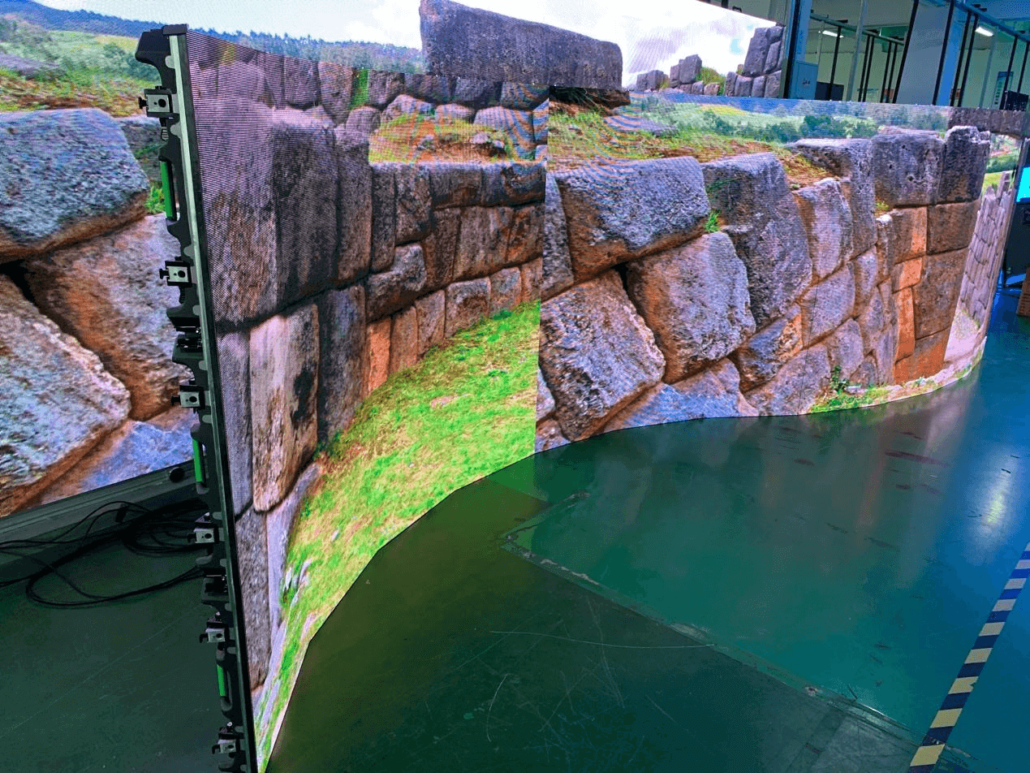
1. Gaming
Curved LED screens are increasingly favored by gamers for their immersive viewing experience. The curved shape of the screen helps draw players into the game, creating a more engaging and realistic experience. The enhanced contrast and color accuracy of curved LED screens improve gameplay by providing clearer, more detailed images.
2. Entertainment Venues
Curved LED screens are widely used in home theaters, cinemas, and other entertainment venues. While curved screens currently represent a minority in cinemas, their advantages are becoming more widespread, suggesting a future where more curved screens will enter theaters. The immersive viewing experience of curved screens enhances the enjoyment of movies, TV shows, and other forms of entertainment by creating a more attractive cinema experience. Furthermore, the wide viewing angle of curved LED screens ensures that everyone in the room can enjoy clear, vibrant images.
3. Advertising and Marketing
Compared to traditional flat screens, curved LED screens attract more attention from target users. More and more businesses are using flexible LED displays for advertising and marketing activities because they can perfectly fit building structures, enabling unique designs that make advertisements more memorable and impactful. They also exert great influence on increasing brand awareness and engagement. Whether used in retail environments, trade shows, or outdoor advertising, curved LED display screens can help businesses stand out and attract customers.
4. Presentations
Curved LED screens are also well-suited for presentations in corporate and educational environments. The immersive viewing experience of curved screens helps engage the audience and keep them focused throughout the presentation. The enhanced contrast and color accuracy of curved LED screens also ensure that visual content is displayed clearly and effectively, making it easier for viewers to understand and remember information.
5. Virtual Studios
Virtual photography is a popular emerging filming technique. Curved LED displays can be used to create large curved virtual video walls to simulate real scenes for filming, reducing post-production steps and costs. Moreover, large curved LED screens combined with VR technology can quickly immerse actors and creators in the on-set atmosphere, improving the quality of filming.
6. Aircraft Flight Simulators
Some large and heavy mechanical and professional driving simulators require a high level of immersion. Curved LED displays can be used in simulators for trainees to conduct simulation exercises. With the support of virtual technology, curved LED display screens can simulate real flight scenarios, while also supporting training on challenging aspects of normal flight such as simulating engine failures and forced landings to enhance pilots’ crisis management abilities.
Conclusion
Curved LED screens represent cutting-edge display technology, offering a range of advantages and applications across various industries. From gaming and entertainment to flight simulation, curved LED screens provide a unique immersive viewing experience and advanced virtual technology that enhances our interaction with digital content. By gaining a comprehensive understanding of curved LED screens, you can make informed decisions on integrating this innovative technology into your own projects and experiences.
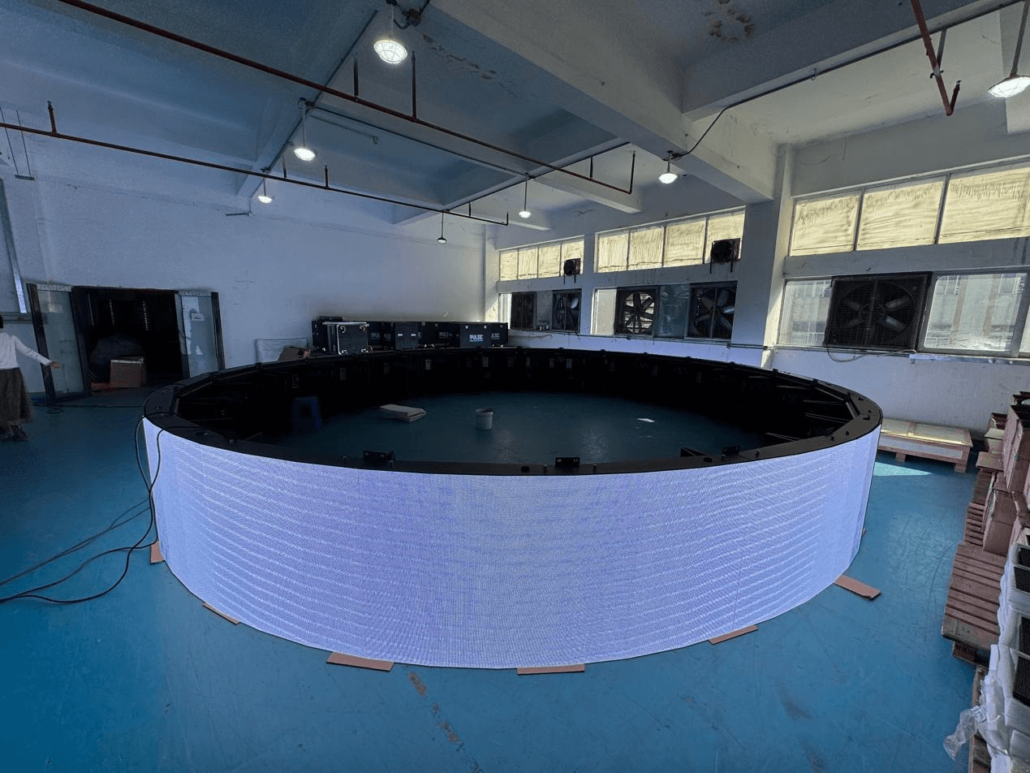
Currently, most LED display manufacturers offer custom curved LED display services. RIGARD LED has successfully completed numerous creative projects involving curved LED display walls for satisfied customers. Our team specializes in tailoring exclusive display solutions for you and delivering high-end display products that meet your expectations.
RIGARD’s curved LED display screens boast impressive features that offer limitless possibilities for your visual experience and business development. Easy maintenance and magnetic design make installation a breeze, while its lightweight nature facilitates transportation and upkeep. The smooth surface and excellent flatness provide your users with clear images and immersive visual enjoyment. Moreover, the flexible panel design grants you creative freedom to meet various artistic needs.
RIGARD LED screens not only deliver outstanding performance for your content but also offer convenience and flexibility for your operation and maintenance. If you have any further inquiries about curved LED displays, feel free to consult our LED experts anytime. We are dedicated to supporting your business development with the best curved screens.

